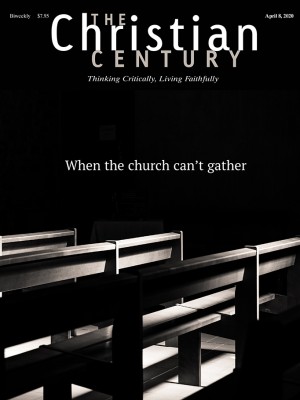Christianity’s explosive growth in Kenya
A nation’s rapid population growth and its complex religious impacts

One of the most important shifts within Christianity over the last century is demographic change—especially the vastly increased share of the global population now concentrated in legendarily religious Africa. The number of African Christians grew from 10 million in 1900 to half a billion in 2015, and it is due to reach a billion no later than the 2040s. By that point, in terms of raw numbers, Africa will be by far the largest Christian continent. That is a revolutionary shift in the world’s religious map.
To understand these statistics and their implications for Christianity, let’s look at one country that has seen incredible growth almost from nothing. When the 20th century began, the East African lands that would become the nation of Kenya had a tiny population of 1.5 million. That number then grew spectacularly. National population reached ten million by 1966 and 30 million by the end of the century. Today it is 50 million.
Read our latest issue or browse back issues.
The country has one of the world’s youngest populations. Some 40 percent of Kenyans are below the age of 15, with another 20 percent between 15 and 24. Such a young profile portends high population growth. By 2050, Kenya could have 95 million people, making it substantially more populous than any single European nation and only a little smaller than Japan.
That growth has plainly transformed Kenyan society, notably in the form of urban expansion. Nairobi began the 20th century with barely 5,000 people—it was a poor relation of the thriving port of Mombasa. Nairobi grew to 100,000 by the early 1950s, and today its larger metropolitan region includes more than 5 million people. By 2050, the city alone could have 14 million.
The religious consequences of this growth are enormous and complex. An overwhelming share Kenya’s population—85 percent—is Christian. If that proportion holds, as it shows every sign of doing, then within a decade or two Kenya will have a far larger Christian population than any European nation. By 2050, that Kenyan Christian community should be around 80 million believers.
That demographic rising tide lifts all denominational boats, and some groups will benefit particularly. Roman Catholics make up a quarter of the whole, with Anglicans another ten percent, but there are many other freestanding independent denominations. The country has some thriving and influential megachurches. The national population growth means that on the global stage, each of these bodies will grow more prominent. Already, Kenya’s 5 million Anglicans far outnumber the US total for Episcopalians and other Anglicans combined, and that international gap is widening yearly. By 2050, Kenya will have at least five Anglicans for every one US counterpart.
Kenya’s 150,000 Quakers already represent by far the largest national contingent of that tradition: 40 percent of the worldwide total. Soon, half the world’s Quakers will be Kenyan.
How will these changes reshape global church bodies? Over the past two decades, the African influence has been ever more apparent in the Anglican Communion. Parallel trends are now having their impact on the Roman Catholic Church. To date, Kenya has had only two Catholic cardinals, and the present incumbent, John Njue, is a powerful voice in the African church. Notably, he is a strong advocate for conservative views on questions of sexuality and morality. Inevitably, as that national church booms, so he and his successors will gain ever more visibility in the affairs of the global church.
No less inevitably, the issues that Christians worldwide need to address will increasingly be defined according to the interests and concerns of that steeply growing share of the faithful who live in lands like Kenya. Kenyan churches face many problems and dilemmas unfamiliar to Americans. One critical difference involves relations with Islam. Ten percent of Kenyans are Muslim, and radical Islamist views are deeply rooted in the troubled neighboring nation of Somalia. Terrorism and communal violence have both posed dreadful problems for Kenyans. Just how should churches respond? How can they build peace between faiths? How exactly should Christians view Islam? As the country grows, so those questions of interfaith relations and coexistence become ever more central to Christian life and thought.
In understanding the Christian world, present and near future, numbers may not be everything. But they are not nothing.
A version of this article appears in the print edition under the title “Kenya rising.”






